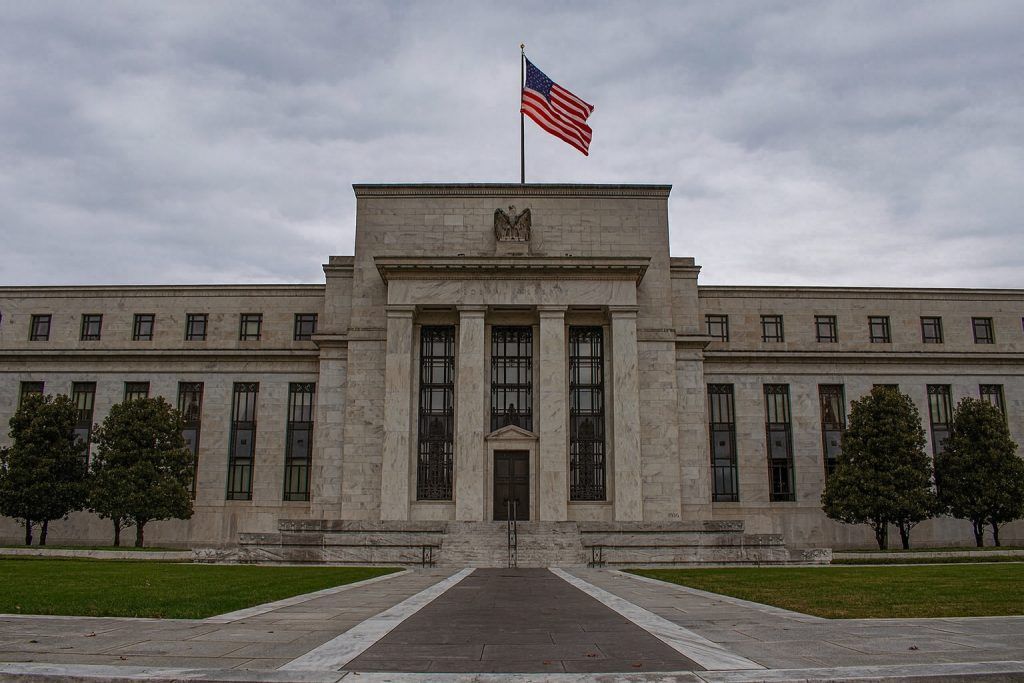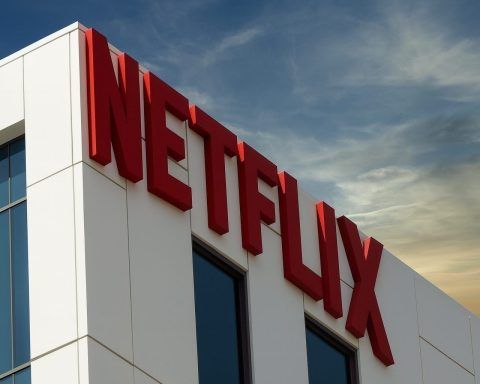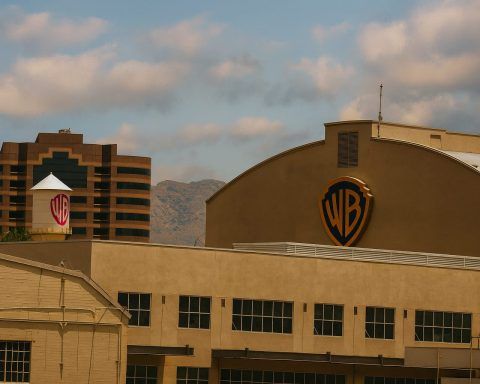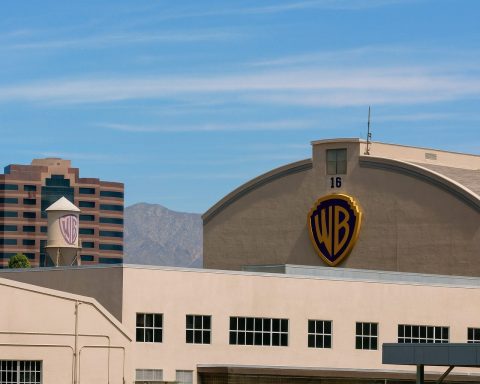- Mass Layoffs Begin: Paramount Skydance has begun cutting ~1,000 jobs across the company this week – about 5% of its workforce – as part of a broader plan to eliminate roughly 2,000 positions (≈10% of staff) in coming months [1] [2]. The layoffs follow an $8.4 billion merger between David Ellison’s Skydance Media and Paramount Global in August and are aimed at achieving $2 billion in cost savings promised to investors [3] [4].
- CBS News Hit Hard: Cuts are impacting Paramount’s news division CBS News, where nearly 100 staffers are expected to lose jobs out of the 1,000 cuts this week [5] [6]. Ellison, now CEO of the merged Paramount Skydance, acknowledged the turmoil in a staff memo, calling it an “enormously difficult day” for the newsroom [7]. The layoffs come amid a major shake-up at CBS News, including the recent hiring of controversial journalist Bari Weiss as editor-in-chief and the announced year-end departure of veteran anchor John Dickerson [8].
- Ellison’s Rationale: In his memo to employees Wednesday, Ellison defended the cuts as “necessary to position Paramount for long-term success”, citing overlapping roles and the need to refocus after the merger [9]. He thanked departing employees for their contributions and insisted that “Paramount’s best days are ahead,” even as staff described the process as “nerve-racking” and worried that “no one is safe” [10] [11].
- Wall Street Angle: The cost-cutting comes as Ellison pursues bold expansion moves. Paramount Skydance has made three takeover offers for rival Warner Bros. Discovery (WBD) in recent weeks – the latest valuing WBD just under $24 per share (~$60 billion) – all of which WBD’s board rejected as too low [12] [13]. WBD confirmed it received unsolicited interest from multiple parties and launched a strategic review of options, including a possible sale or spin-off of divisions [14] [15]. Ellison’s firm is still seen by some analysts as the bidder “most likely to succeed” in ultimately acquiring WBD [16], though WBD has thus far been “resistant” to Paramount’s overtures [17].
- Stock Surge & Forecasts:WBD’s stock price jumped nearly 10% on news of takeover interest, recently trading around $19–$20 (up from ~$18) [18] [19]. Analysts are split on the outlook: Wolfe Research’s Peter Supino estimates a Paramount–WBD merger could save ~$3 billion annually, justifying a hefty takeover premium [20]. But Brandon Nispel of KeyBanc warns WBD’s rally “may have gotten ahead of itself,” noting that bids in the $22–$24 per share range might emerge – but are not guaranteed [21]. If no deal materializes, WBD’s stock could slide back toward analysts’ consensus 12-month target (≈$17) [22]. Meanwhile, the newly merged Paramount Skydance (NASDAQ: PSKY) is under pressure to demonstrate it can cut costs and grow profits as an independent contender in the streaming wars.
Layoffs Under Ellison’s New Regime
Just two months after Skydance Media’s $8+ billion takeover of Paramount Global, the combined company – now Paramount Skydance Corp. – is undertaking one of the entertainment industry’s largest recent staff reductions [23] [24]. On Wednesday (Oct. 29), CEO David Ellison kicked off the first phase: roughly 1,000 layoffs across U.S. operations spanning film, TV, streaming, and corporate units [25]. Additional cuts bringing the total to about 2,000 jobs eliminated are expected in the coming weeks [26].
Ellison, 40, assumed leadership of Paramount Skydance after orchestrating the merger in August, which made him the latest Hollywood mogul at the helm of a storied studio. (He’s backed by his father, Oracle co-founder Larry Ellison, whose fortune has helped enable these moves [27].) As part of the deal, Ellison pledged to find $2 billion in annual cost savings – a promise now being put into action through these layoffs and other belt-tightening measures [28].
“In some areas, we are addressing redundancies… In others, we are phasing out roles that are no longer aligned with our evolving priorities… Ultimately, these steps are necessary to position Paramount for long-term success,” Ellison wrote in a memo to all staff Wednesday morning [29]. He stressed that the company wants to make the cuts swiftly and move on: “We do not want to be a company that has layoffs every quarter,” one executive had said in August as layoff plans were formulated [30]. Ellison echoed that sentiment in his note, emphasizing the need to “build a strong foundation for the future” even as he acknowledged the pain of letting so many colleagues go [31].
As of late 2024, Paramount had roughly 18,600 employees worldwide (plus 3,500 project-based staff) [32]. The ~2,000 planned job cuts suggest more than 1 in 10 employees will ultimately lose their roles. Many staff had been bracing for this downsizing for months, especially once the Skydance deal closed. “It’s awful and stressful,” one Paramount engineer told Business Insider earlier, adding that employees were “used to it” after multiple rounds of cuts under the previous owner [33]. Still, the scale of this week’s layoffs is extraordinary – “no one is safe,” one anxious CBS News staffer said of the nerve-wracking wait for the axe to fall [34].
Company insiders say the cuts are spread across divisions, targeting overlapping jobs post-merger and projects deemed non-core. “In some areas, we’re addressing redundancies… in others, phasing out roles…,” Ellison explained of the rationale [35]. Departments ranging from production and distribution to streaming operations are affected, according to reports. The CEO’s memo expressed “deep gratitude” to those being let go “for your hard work, professionalism, and resilience during this period of transition” [36]. Impacted employees are being offered severance packages. Notably, Ellison has also mandated that remaining staff return to the office five days a week starting in January – offering anyone unwilling to comply a buyout to leave [37]. The message is clear: a new regime is in charge, pushing a leaner workforce and a more aggressive culture to transform the company.
News Division Overhaul at CBS
One of the highest-profile areas seeing cuts is CBS News, the venerable news organization now under Paramount’s umbrella. For months, rumors swirled that a sweeping newsroom downsizing was looming – and Wednesday it arrived. While Paramount declines to break out exact figures by division, multiple outlets report that fewer than 100 CBS News employees are being laid off in this round [38] [39]. That may sound modest relative to the 1,000 company-wide cuts, but it represents a significant hit to a news division already under intense pressure to reinvent itself.
The timing is tumultuous. Just weeks ago, Paramount installed Bari Weiss – a former New York Times columnist known for her contrarian views – as editor-in-chief of CBS News, after acquiring her startup media outlet The Free Press for a reported $150 million [40] [41]. Weiss’s appointment on October 6 immediately signaled a new direction for CBS’s journalism, one aimed at broadening its audience with a mix of traditional reporting and unorthodox commentary. Internally, some staff bristled at Weiss’s outspoken style and the sudden leadership shake-up. Now, the layoff wave has compounded anxieties in the newsroom.
Weiss addressed employees briefly at an editorial meeting Wednesday morning, acknowledging it would be an “enormously difficult day” at CBS News [42]. (Notably, Paramount sources told The Guardian that these layoffs were planned before Weiss was hired, suggesting she is not directly responsible for who stays or goes [43].) Still, the convergence of a new boss and job cuts has employees on edge. “Seems no one is safe,” one CBS News staffer said, describing the atmosphere as “nerve-racking” [44].
In fact, the shake-up at CBS News extends beyond rank-and-file cuts. On Monday, just two days before the layoffs, John Dickerson – a correspondent and one of CBS’s most respected anchors – announced he will leave the network at year’s end [45]. Dickerson’s exit after a long tenure (which included anchoring Face the Nation and CBS Sunday Morning) is widely seen as paving the way for a revamp of the flagship CBS Evening News, which has struggled in ratings. Additionally, CBS’s head of journalistic standards, Claudia Milne, recently departed [46]. In short, a top-to-bottom overhaul of CBS News is in motion under Ellison’s regime.
Ellison’s memo to staff paid tribute to the contributions of those leaving and asserted that “Paramount’s best days are ahead” despite the current pain [47]. But the cuts at CBS are the deepest since 2020 – when about 50 people were laid off early in the pandemic [48] – and they mark a dramatic culture shift. The network’s news division, historically known for stalwart journalism and stability, is now being reshaped with a dash of Silicon Valley disruptor ethos (Ellison’s Skydance is a tech-forward studio) and an infusion of new editorial leadership. How Weiss steers CBS News post-layoffs will be closely watched; for now, the immediate priority is regrouping after a bruising day.
Ellison’s Ambitions: Eyes on Warner Bros. Discovery
Why is Ellison aggressively cutting costs at Paramount? One big reason: he has much bigger fish to fry. The 10% headcount reduction is part of preparing the company for a possible mega-acquisition – namely, Warner Bros. Discovery (WBD), one of Hollywood’s largest content powerhouses. In recent weeks, Ellison’s Paramount Skydance has launched a stealth campaign to buy WBD, owner of HBO, CNN, the Warner Bros. film studios, DC Comics, and more. Multiple sources confirm that Paramount made at least three offers to WBD’s board since September [49] [50].
The latest bid, pitched roughly a week ago, valued Warner Bros. Discovery at just under $24 per share – equating to nearly $60 billion (approximately 80% in cash with the rest in stock) [51]. WBD’s board rejected that offer, as well as the earlier ones, deeming them inadequate [52] [53]. According to CNBC reporting, WBD felt Ellison’s bids – the first of which was around $20 per share (~$40 billion) and later raised – were too low and perhaps premature [54] [55]. However, the approach clearly got WBD’s attention. On Oct. 21, Warner Bros. Discovery publicly announced its board has opened a “comprehensive review of strategic alternatives” after receiving unsolicited takeover interest [56]. In plain English, WBD signaled it is open to a sale or break-up of the company. Options on the table include going ahead with a planned 2026 spin-off of its studios/streaming unit from the cable networks division – or selling the entire company or big chunks of it to a bidder [57]. Nothing is guaranteed, WBD cautioned, but CEO David Zaslav acknowledged “it’s no surprise” others covet WBD’s assets and that the board will seek to “unlock the full value of our assets” for shareholders [58].
From Paramount’s perspective, absorbing WBD would be transformational – creating one of the world’s largest entertainment conglomerates. Ellison (partnering with private equity and reportedly even with Netflix’s backing in some form) appears determined to pursue this media empire-building move [59]. His vision, analysts say, is to combine Paramount’s film/TV studios, the CBS network, Paramount+ streaming, and Skydance’s productions with WBD’s vast library (Warner Bros., HBO) and Discovery’s global cable channels. Such a combination could yield massive cost synergies by eliminating overlapping functions and increasing bargaining power in content distribution.
Indeed, Wall Street is already handicapping the odds. Wolfe Research analyst Peter Supino estimates a Paramount–WBD merger could achieve about $3 billion in annual cost savings, which would justify paying a premium for WBD’s stock [60]. That helps explain why Ellison is slashing costs internally – to make a potential deal financially digestible and to show investors he’s serious about efficiency. It’s worth noting, too, that Ellison’s first big act after the merger was to spend $7.7 billion securing US rights to UFC mixed martial arts programming [61], indicating a go-big mindset. His Paramount has also lured the creators of Stranger Things away from Netflix and is doubling down on streaming content. In short, Ellison is not in retrenchment mode despite the layoffs – he’s reallocating resources toward ambitious growth bets.
Warner Bros. Discovery’s response so far has been cautious. While opening the door to offers, WBD’s leadership also continues to pursue a standalone plan: they have a major restructuring and debt-reduction effort underway after the 2022 merger of WarnerMedia and Discovery, and they still intend to execute a split into two companies by mid-2026 (splitting off Warner/HBO from Discovery’s lifestyle networks) if no sale happens [62] [63]. Internally, Zaslav told employees there’s no set timetable on the strategic review and that nothing might come of it if bids don’t meet their value expectations [64]. However, the mere specter of a bidding war for WBD has energized investors and put a spotlight on Ellison’s moves.
Market Reaction and Outlook
News of Ellison’s bold takeover interest in WBD has been rocket fuel for Warner’s stock. On Oct. 21, when rumors of Paramount’s approach and WBD’s strategic review hit the press, WBD shares spiked about 7–11% in a single day [65] [66] – a significant jump for a media giant – and even touched a 52-week high around $21.50 intraday [67]. The stock has since settled in the high teens, up roughly 75% year-to-date (it started 2025 near $11–12 and recently traded ~$19–20) [68] [69]. Clearly, traders are betting that a buyout offer will ultimately materialize at a higher price. WBD’s market capitalization is now in the mid-$40 billion range after the rally [70].
But how much higher – and will it happen? That’s where analysts are divided. Many on Wall Street agree that Paramount Skydance is the likeliest suitor for WBD, given Ellison’s demonstrated interest and deep pockets (thanks to backing from investors like his father and possibly tech partners) [71]. Brandon Nispel at KeyBanc however urges caution to those piling into WBD stock. He noted this week that the recent WBD rally “may have gotten ahead of itself,” since no deal is done [72]. Nispel argues that while bids in the ~$22–$24/share range (roughly $50–55 billion) could be put forward to entice WBD, there’s no guarantee Ellison or others will meet WBD’s price expectations [73]. In fact, Reuters reported that Ellison may need to go closer to $25+ per share to get traction – a level he’s said to be reluctant to exceed [74]. If talks fizzle, some analysts warn WBD’s stock could give back a chunk of its gains, falling toward fundamental valuation levels (the average analyst price target is only ~$17, below the current market price) [75].
On the flip side, Paramount Skydance (PSKY) itself does not yet reflect much euphoria in its stock (the company is newly listed after the merger). Investors appear to be taking a “show me” approach: they want to see Ellison deliver improved profits from cost cuts and possibly a successful acquisition, rather than bid up PSKY stock on speculation alone. Paramount’s balance sheet would also be heavily tested by a $60 billion takeover – which likely explains the ~80% cash structure of Ellison’s offer (he’d need to line up tens of billions in debt and outside equity financing) [76]. Any deal would also face scrutiny in Washington; it hasn’t gone unnoticed that Ellison’s merger spree comes after a change in the White House – one CNBC report even noted a congressional probe into whether a political donation greased the wheels for the Paramount-Skydance merger approval [77].
For now, Paramount’s focus is on getting its own house in order – completing the layoffs, integrating Skydance’s operations, and proving that a slimmer “New Paramount” can thrive. Ellison insists the painful cuts now will make the company stronger. “We remain confident that Paramount’s best days are ahead,” he told employees in an upbeat closing to his layoff memo [78]. Industry experts note that virtually every major media company has undergone belt-tightening recently: Disney slashed 7,000 jobs earlier in 2023, Warner Bros. Discovery itself cut jobs post-merger, and Netflix has periodically trimmed staff despite booming content budgets. In that context, Paramount’s 2,000 layoffs, while brutal for those affected, are seen as part of a broader industry effort to improve margins amid intense streaming competition and content spending.
The coming weeks will be critical for Ellison’s strategy. Paramount Skydance is set to report its first post-merger quarterly earnings on Nov. 10, and Ellison will face investors’ questions about the company’s direction [79]. He will likely highlight the $2 billion cost reduction plan and could hint at whether he will return to the bargaining table with WBD. Some insiders believe Paramount might pause after this initial 1,000-person layoff wave to gauge morale and operational impact before deciding on further cuts or a revised WBD bid. Others speculate Ellison could bring in a deep-pocketed partner (for example, a big tech or private equity player) to bolster any higher offer for Warner.
Bottom Line: David Ellison is aggressively remaking Paramount in his own vision – cutting costs, revamping legacy institutions like CBS News, and positioning himself to potentially engineer the next mega-merger in Hollywood. It’s a high-risk, high-reward play. If he succeeds in acquiring Warner Bros. Discovery at a (for now) reasonable price, he could preside over an entertainment colossus rivaling Disney and Netflix. If not, he still must prove that the newly merged Paramount Skydance, leaner but ambitious, can go it alone. As one media analyst put it, “Ellison is swinging for the fences” – and with thousands of jobs and billions of dollars on the line, Hollywood and Wall Street will be watching closely. [80] [81]
Sources: CNN/AFP, The Guardian, Reuters, CNBC, ABC News/AP, Business Insider, TechStock² (ts2.tech) [82] [83] [84] [85], etc.
References
1. www.reuters.com, 2. abcnews.go.com, 3. www.reuters.com, 4. www.theguardian.com, 5. www.theguardian.com, 6. www.theguardian.com, 7. www.theguardian.com, 8. www.theguardian.com, 9. www.theguardian.com, 10. www.theguardian.com, 11. www.theguardian.com, 12. ts2.tech, 13. www.reuters.com, 14. ts2.tech, 15. abcnews.go.com, 16. www.reuters.com, 17. abcnews.go.com, 18. ts2.tech, 19. ts2.tech, 20. ts2.tech, 21. ts2.tech, 22. ts2.tech, 23. www.reuters.com, 24. www.theguardian.com, 25. www.reuters.com, 26. abcnews.go.com, 27. www.businessinsider.com, 28. www.reuters.com, 29. www.theguardian.com, 30. www.businessinsider.com, 31. www.theguardian.com, 32. www.reuters.com, 33. www.businessinsider.com, 34. www.theguardian.com, 35. www.theguardian.com, 36. www.theguardian.com, 37. www.businessinsider.com, 38. www.theguardian.com, 39. www.theguardian.com, 40. www.businessinsider.com, 41. abcnews.go.com, 42. www.theguardian.com, 43. www.theguardian.com, 44. www.theguardian.com, 45. www.theguardian.com, 46. www.theguardian.com, 47. www.theguardian.com, 48. www.theguardian.com, 49. ts2.tech, 50. abcnews.go.com, 51. ts2.tech, 52. ts2.tech, 53. abcnews.go.com, 54. ts2.tech, 55. ts2.tech, 56. ts2.tech, 57. ts2.tech, 58. ts2.tech, 59. ts2.tech, 60. ts2.tech, 61. www.businessinsider.com, 62. ts2.tech, 63. ts2.tech, 64. ts2.tech, 65. ts2.tech, 66. ts2.tech, 67. finance.yahoo.com, 68. ts2.tech, 69. ts2.tech, 70. ts2.tech, 71. www.reuters.com, 72. ts2.tech, 73. ts2.tech, 74. seekingalpha.com, 75. ts2.tech, 76. ts2.tech, 77. www.imdb.com, 78. www.theguardian.com, 79. www.hollywoodreporter.com, 80. www.reuters.com, 81. ts2.tech, 82. www.theguardian.com, 83. www.reuters.com, 84. abcnews.go.com, 85. ts2.tech










